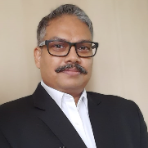Mastering Evidence Law: Unveiling Legal Proof Strategies
Posted On : May 26, 2023

Table of Contents
Introduction: Evidence Law in India
The Latin term "evidere," from which the English word "evidence" is derived, is to verify or make plainly evident as a proof of anything. Evidence simply refers to something that provides proof of something, and it only applies to such items. In India, several types of evidence are regularly produced in court, and the Indian Evidence Act, 1882, governs this area of the law.
Definition of Evidence
According to Indian law, "evidence" refers to a piece of information that is presented to the court and uses to persuade the court of pertinent facts. Additionally, the subject of the investigation relates to specific facts that call for evidence. Therefore, evidence in the broadest sense includes everything that is used to determine or demonstrate the veracity of a claim.
Indian Evidence Act, 1872
During the British rule in India, the Indian Evidence Act was approved by The Imperial Legislative Council of India in 1872. This Act provides a collection of guidelines and related matters which governs the admissibility of evidence in Indian courts of law.
An innovative legal measure was established in India with the enactment and approval of the Indian Evidence Act, which completely altered the system of ideas pertaining to the admissibility of evidence in Indian courts of law. Up until that point, the rules of evidence were based on the old legal systems of India's various social groupings and communities, and they varied depending on caste, community, religion, and social status for different people. All Indians are now subject to the same set of laws according to the Indian Evidence Act.
What is Indian Evidence Act, 1872?
According to the Indian Evidence Act of 1872, "evidence" is defined as: "All the statements which the court permits which were made by the witness relating to the matters of fact"; "All the documents including electronic record as an evidence for the courts"; and "All the statements which the court permits which were made by the witness relating to the matters of fact."
The definition of evidence as stated in this Act is extremely limited. This is due to the fact that there are only two types of evidence presented to the court: witness statements and papers, which may include electronic records.
What are the Different Types of Evidence?
The list of different types of evidence are listed below;
-
Oral Evidence
Oral evidence refers to that evidence that has been observed or heard by the observer. The setting up of oral evidence is covered in Section 60 of the Indian Evidence Act of 1872. Oral evidence refers to all of these justifications that the court will accept from observers regarding the actuality of realities. Positive, immediate, consistent oral evidence is preferred.
-
Documentary Evidence
Each and every record that is presented in court for review is referred to as narrative evidence, according to Section 3 of the Indian Evidence Act. The story evidence is more reliable than any oral testimony in demonstrating the general attitude of meetings towards the tradition. For instance, on the applicant's website, in press reports published in online newspapers, and in articles and adverts on other websites.
-
Real Evidence
Real Evidence inferred physical proof. This evidence is presented to the court through an evaluation of a tangible object rather than through the observer's data record. Individual evidence is what is controlled by humans, either by sign or exposure. Examples include physical evidence are the murder weapon in a murder case and pictures of the location and condition of the deceased corpse.
-
Hearsay Evidence
This evidence is useless and is merely the declared proof of the observer. According to the Bombay High Court, slanderous evidence cannot be used against a group solely because the committee fails to object when the evidence is presented. Further, it added that as a result, we affirm that hearsay evidence is information that an observer has not heard or seen but has learned about through a third party.
-
Primary Evidence
Primary evidence is the highest class of evidence. According to Section 62 of The Indian Evidence Act, 1872, it is evidence that every potential circumstance offers a crucial hint that accumulates through the narrative evidence.
-
Secondary Evidence
According to Section 63, it is evidence that has an auxiliary function. Due to the fact that it was felt upon introduction that this proof was better than any that had previously existed. For instance, textbooks, scholarly books, journal articles, copies of documents or pictures, reviews, etc.
-
Direct Evidence
Direct evidence is that type of proof that matters for the decision on the question at hand. The main fact is that items and witnesses are present right away when it is claimed by witnesses. The declaration made in front of the police is referred to as incidental proof of complicity. For instance, a security camera, an accused person's audio recording, witness evidence, a ballistics test, etc.
-
Indirect Evidence
This kind of evidence illustrates present realities by citing examples of other realities and providing context for each reality. Physical evidence, forensic evidence, scientific evidence, and fingerprint evidence are a few examples.
-
Judicial Evidence
This is an evidence that was gathered in a formal courtroom to support or refute reality. Additional judicial evidence includes witness statements and reality for the judge's consideration. As an illustration, consider the times of sunset and sunrise, recognized historic occurrences, public and court documents, etc.
-
Non-Judicial Evidence
Non-judicial evidence is any admission that is made by blaming someone or something outside of the courtroom in the presence of another person or group. As an illustration, consider an admission made by the defendant outside of court and in public.
What are the Evidences recognized by the Courts?
The following are some of the evidences which are recognized by courts;
-
Real Evidence
Anything utilized in the case currently being heard by the court falls under this category of evidence. It might contain a knife, a gun, bloodied clothing, and many other things.
-
Testimonial Evidence
Since it doesn't need any additional proof to be accepted as valid, this sort of evidence is regarded as the easiest type of evidence.
-
Demonstrative Evidence
This kind of evidence is presented via infographics, animations, maps, etc. particularly,this is acknowledged as the first testimony of its kind provided by a witness.
-
Documentary Evidence
This form of evidence is frequently regarded as legitimate because it contributes to the documentation of the subject under consideration in a trial.
Conclusion
The Indian Evidence Act of 1872 is quite comprehensive and has broad implications. The statutory provisions, the circumstances of the case, and the fundamental ideas of natural justice all play a major role in how this Act is applied. As a result, the primary goal of the Evidence Act is to uncover the truth, which is founded on the evidence presented to the court.
The facts must be presented to the courts by the two parties. Therefore, while evidence does not impose constraints on the parties, it does serve as a guide for the courts when making decisions. However, it is always advisable to consult a lawyer to have detailed access to evidence law in the relevant jurisdiction. In simple words, if you are residing in Kolkata, then you should consult a lawyer in Kolkata to get relevant consultation on evidence.
























